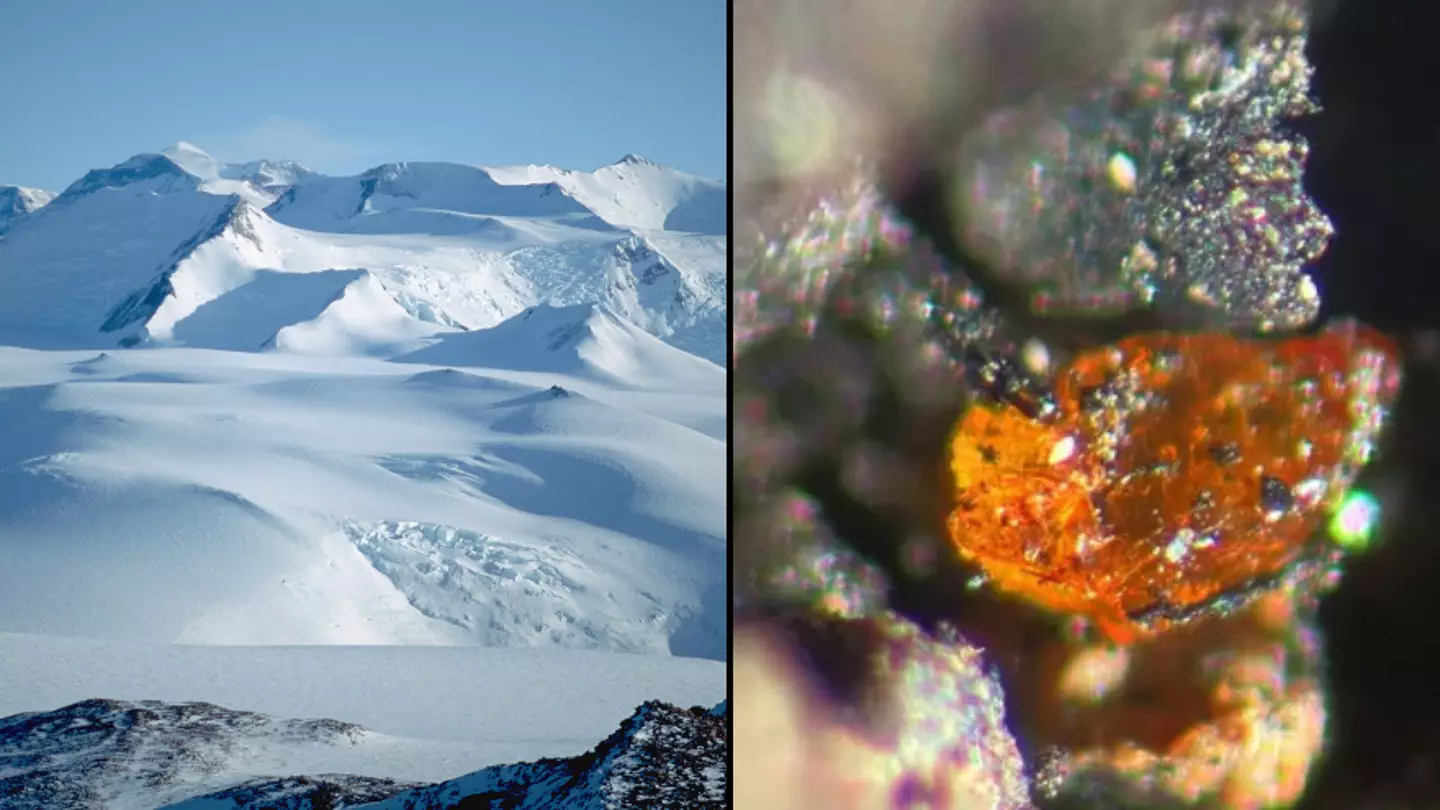
A 90-million-year-old fossil could definitively change everything we know about the history of Antarctica.
What do you think when someone says the words ‘Antarctica’ or ‘South Pole’? It’s most likely extreme cold, penguins and maybe even the Drake Passage – if you’re familiar with a certain area of TikTok.
However, we’d imagine that rolling rainforests and lush greenery isn’t on that list.
Well, it looks like things haven’t always been that way.

The Antarctic wasn’t always blisteringly cold (Getty Stock Images)
The argument that Antarctica harbours more than just mounds of snow and ice isn’t anything particularly new. With numerous conspiracy theorists over the years peddling the ideas such as secret mega civilisations, secret bunkers for global elites, Game of Thrones-esque ice walls and even a gateway to the inside of Earth doing the rounds over the years.
While the above are hardly much more than evidence that a lot of people have a very over-active imagination, there is emerging evidence in the scientific community which suggests the barren landmass wasn’t always completely frozen over.
The latest evidence to support this theory comes courtesy of scientists in Germany, who have revealed they have discovered the presence of amber on the west side of the continent.
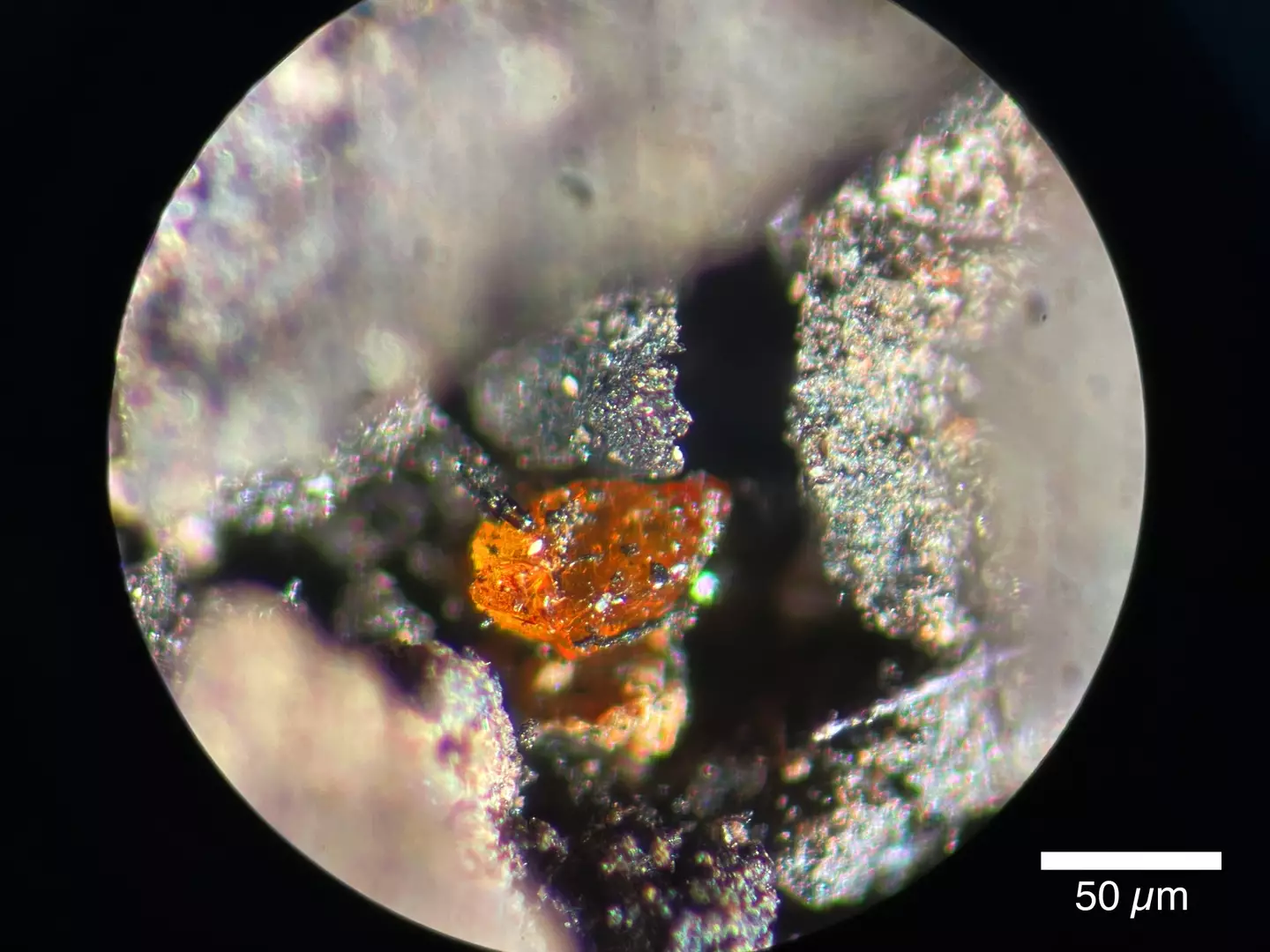
The amber discovered on the continent (Alfred Wegener Institute)
Now, this may not sound as exciting as lizard people or ice pyramids, but is nonetheless a very important piece of evidence when it comes to decoding Antarctica’s past.
Amber is formed from resin found in tree bark, which has since fossilised and hardened for more than 40,000 years.
Pretty cool, huh?
“It was very exciting to realise that, at some point in their history, all seven continents had climatic conditions allowing resin-producing trees to survive,” Johann Klages, study lead and marine geologist at the Alfred Wegener Institute, said of the discovery.
Explaining what’s next for researchers, he added: “Our goal now is to learn more about the forest ecosystem – if it burned down, if we can find traces of life included in the amber.
“This discovery allows a journey to the past in yet another more direct way.”

The location in which the amber was discovered (Alfred Wegener Institute)
The existence of amber on the continent also confirms that trees would have once stood in its place, with the ancient discovery suggesting a swampy and temperate rainforest once stood in this location.
Amber isn’t the only evidence of life on the continent either, with previous discoveries from scientists including fossils of roots, pollen and spores.
The 90-million-year-old date means the trees likely stood during the cretaceous period.
Spanning a period of time 145 million to 66 million years ago, the cretaceous period was a time where the Earth was a lot warmer than it is today, while the landmass known as Pangea has already broken apart and begun to form the continents we’re more familiar with.
Featured Image Credit: (Getty Stock Images/Alfred Wegener Institute)
Topics: Environment, History, World News, Science
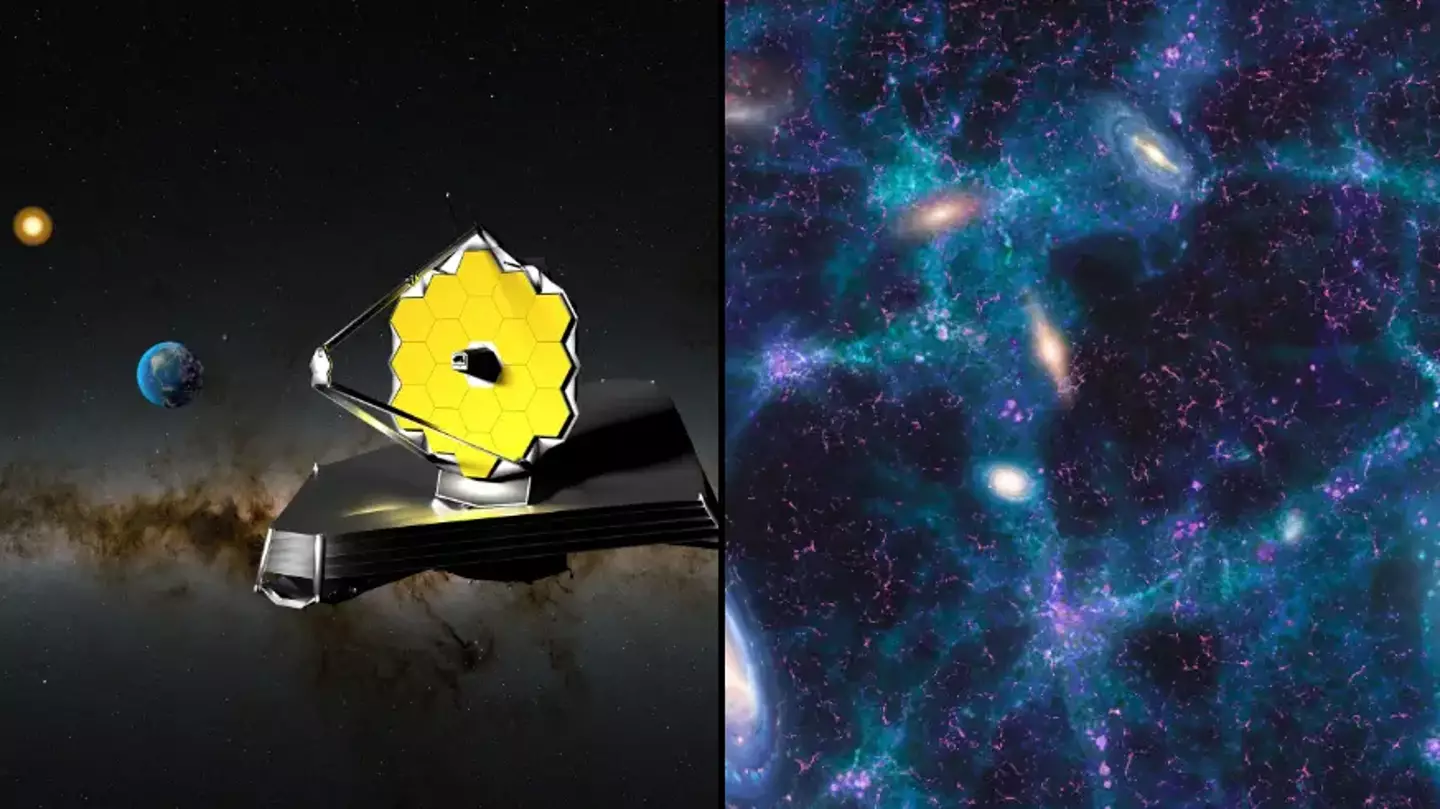
Space never ceases to amaze us, but what the James Webb Space Telescope (JWST) just found has changed everything that we know about the universe.
The JWST is an advanced version of the 1990 Hubble telescope, which was launched into space in December 2021.
However, the JWST has made numerous discoveries in space, some of which could even point to there being life beyond our small planet.
It also found that potential planets could be forming right in front of us after discs and dust gathered around two stars.
But now, it’s found something bigger.

The universe is vast (Getty Stock Images)
While we’re just a speck of dust in the cosmos, we’ve been trying to figure out all that there is to know about the universe for quite some time.
That means we’ve tried to date back to how old the universe is.
For years, cosmologists have believed the universe is approximately 13.8 billion years old, but new JWST findings suggest that this may be incredibly inaccurate.
New research had found that the universe’s age is probably more likely to be 26.7 billion years, which accounts for the JWST’s observations.
Data from the 1990s’ Hubble Space Telescope launch meant that originally, people thought it was between 7 billion to 20 billion years, and later agreed on 13.8 billion years.
It all began with the presence of ‘impossible early galaxies’.
These galaxies emerged during the cosmic dawn, which occurred around 500 to 800 million years post-Big Bang, and really shouldn’t have evolved disks so quickly.
So, surely they had been created earlier than we thought?

The JWST changed everything (Getty Stock Images)
Explaining how the universe’s age was challenged, Rajendra Gupta from the University of Ottawa told The Brighter Side: “I attempted to marry the conventional big-bang model with the tired light theory, hoping to account for both supernovae and JWST data.
“While this expanded our universe’s age to 19.3 billion years, it couldn’t entirely account for the JWST data.”
That’s when he tried combining the tired light theory with an evolving model based on the coupling constants, which gave a lot better results. Still with us?
Thanks to this, the hybrid model accounted for the JWST’s observations and also put the universe’s age to 26.7 billion years.
Although the Hubble Space Telescope had already guessed at the ‘impossible early galaxy’ issue, the JWST‘s launch in December 2021 strengthened these claims.
Now, scientists have a clear picture of when the universe came to be, and this could help them in the future to recalculate the date of emerging planets, among other things.
As the universe continues to be a vast space of confusion for us to wrap our heads around, at least this one thing has been put to bed at last.
Featured Image Credit: Getty Stock Images
Topics: James Webb Space Telescope, Space, Science
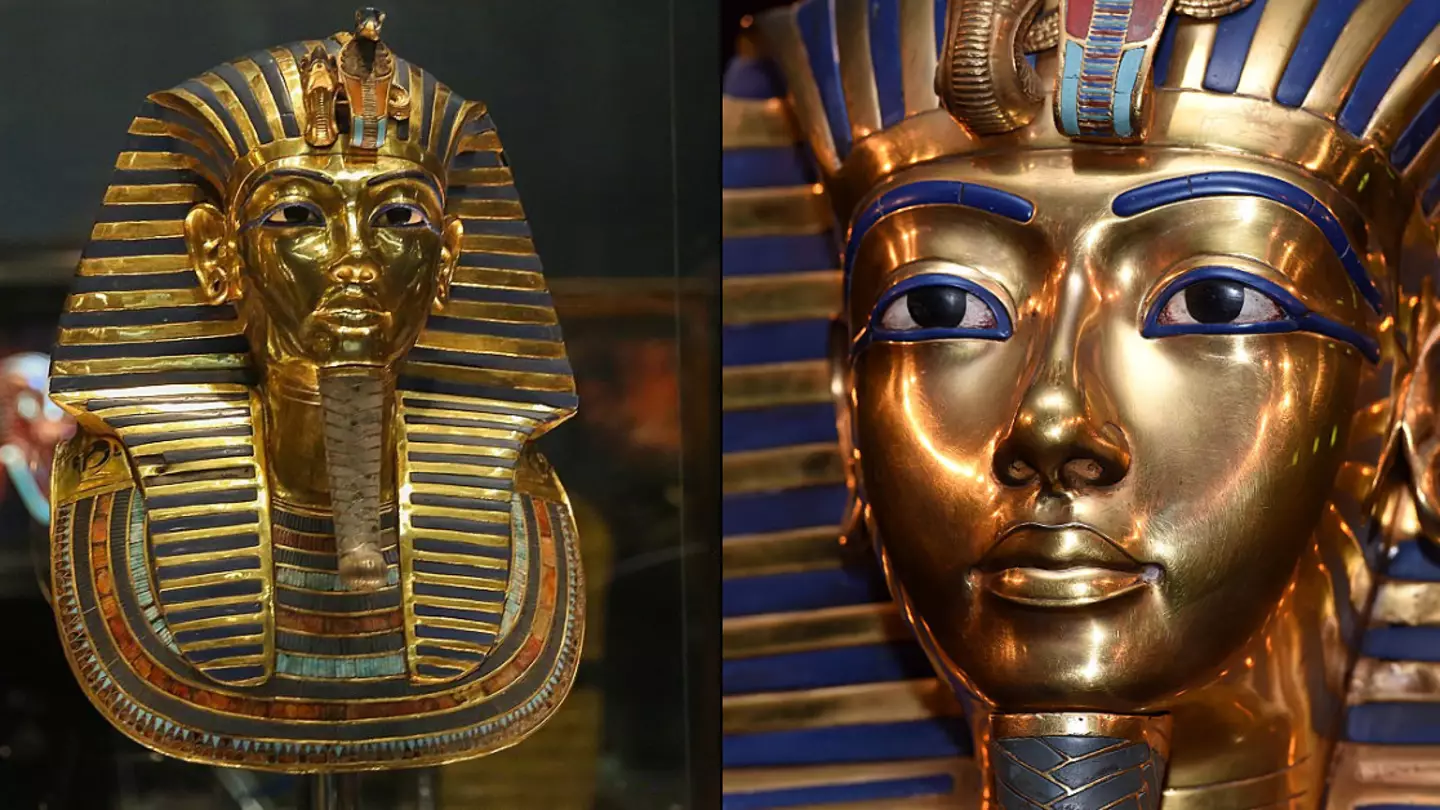
The death mask of boy King Tutankhamun is one of the most recognisable and famous relics from Ancient Egypt, but our understanding of it might be about to change.
A team at the University of York lead by Professor Joann Fletcher came to a shocking conclusion on the iconic headpiece.
Tutankhamun is one of the most well-known pharaohs of his time, becoming the rule of Egypt aged just nine and was only at the helm for 10 years (1332 BC to 1323 BC) before his sudden death, after a life plagued by health issues.
His death mask was originally discovered by British archaeologist Howard Carter in 1922, but 102 years on, Professor Fletcher has uncovered something new.
The mask is now kept in the Egyptian Museum in Cairo, but while looking through Carter’s burial records held at Oxford University’s Griffith Institute, Fletcher discovered a specific detail about it.

Most people are familiar with the pharaoh’s death mask (Mostafa Elshemy/Anadolu Agency/Getty Images)
Speaking during the All Out History documentary, she revealed: “This mask was not made for an adult male pharaoh when the gold was compared, (they found) the face is made of completely different gold to the rest.”
Her team came to this theory after re-examining existing records of the 1922 excavation, which included information of body modifications that didn’t line up with ancient Egyptian tradition.
One document stood out to Fletcher, as it read: “Honed in on one long-overlooked feature… the decidedly pierced ears (on the death mask).”
Pharaohs did where earrings, but these piercings did not carry to the death mask, only dead children and queens were allowed to bear these details.
It was first suggested in 2015 by Egyptologist Nicholas Reeves, who theorised that the gold face covering was actually made for the young king’s stepmother, Queen Nefertiti, whose body and tomb have never been found.
Death masks were not made just for pharaohs, but everyday people too, honouring the dead and making connections with the spiritual world.
These could vary in material, depending on the status of the person, while being made in the likeness of the person’s face so that their soul could return to their body and be judged by the Egyptian God Anubis.
King Tutankhamun’s mask had a collar of semiprecious stones and coloured beads, while being given a false beard of gold.
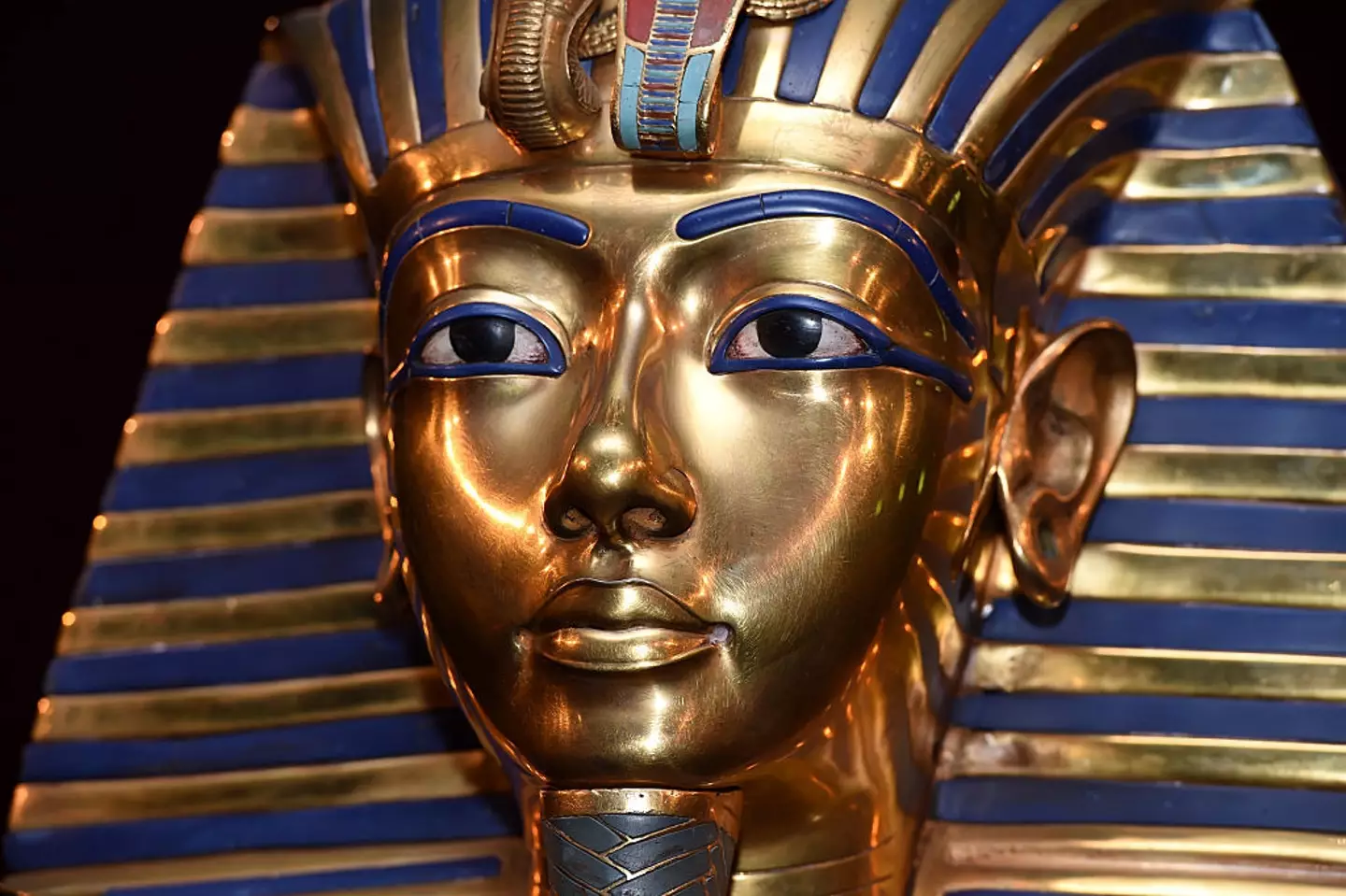
It is theorised that Tutankhamun’s burial was a rushed job (Hannes Magerstaedt/Getty Images)
But Professor Fletcher initially wanted to find out more, as the ear piercings on the piece caught her eye, with the Egyptologist studying the ancient civilisation throughout her career.
Previous pharaohs did not have ear modifications or ear piercings on their death masks, while queens’ death masks have featured these modifications.
Fletcher said that this could be due to the fact that his burial was rushed due to health issues, as Akhenaten married his sister, who gave birth to Tut.
His health at the time of his death has not been confirmed, but clues of a rushed burial go beyond the death mask.
Archaeologists found blotches of paint on the wall that hadn’t dried when the tomb had been sealed, while the lavish burial was smaller than what was expected for a pharaoh of Tutenkhamun’s status.
Professor Fletcher further added: “This is the tomb that was intended for Tutankhamun, the tomb of Ay,
“To deepen the enigma, dark spots are scattered across the walls of King Tut’s tomb marks that scores of experts point to as a sign the paint was still wet when the tomb was sealed, hinting at the hurried nature of its completion,” she said.
Featured Image Credit: Mostafa Elshemy/Anadolu Agency/Getty Images / Hannes Magerstaedt/Getty Images
Topics: History, World News
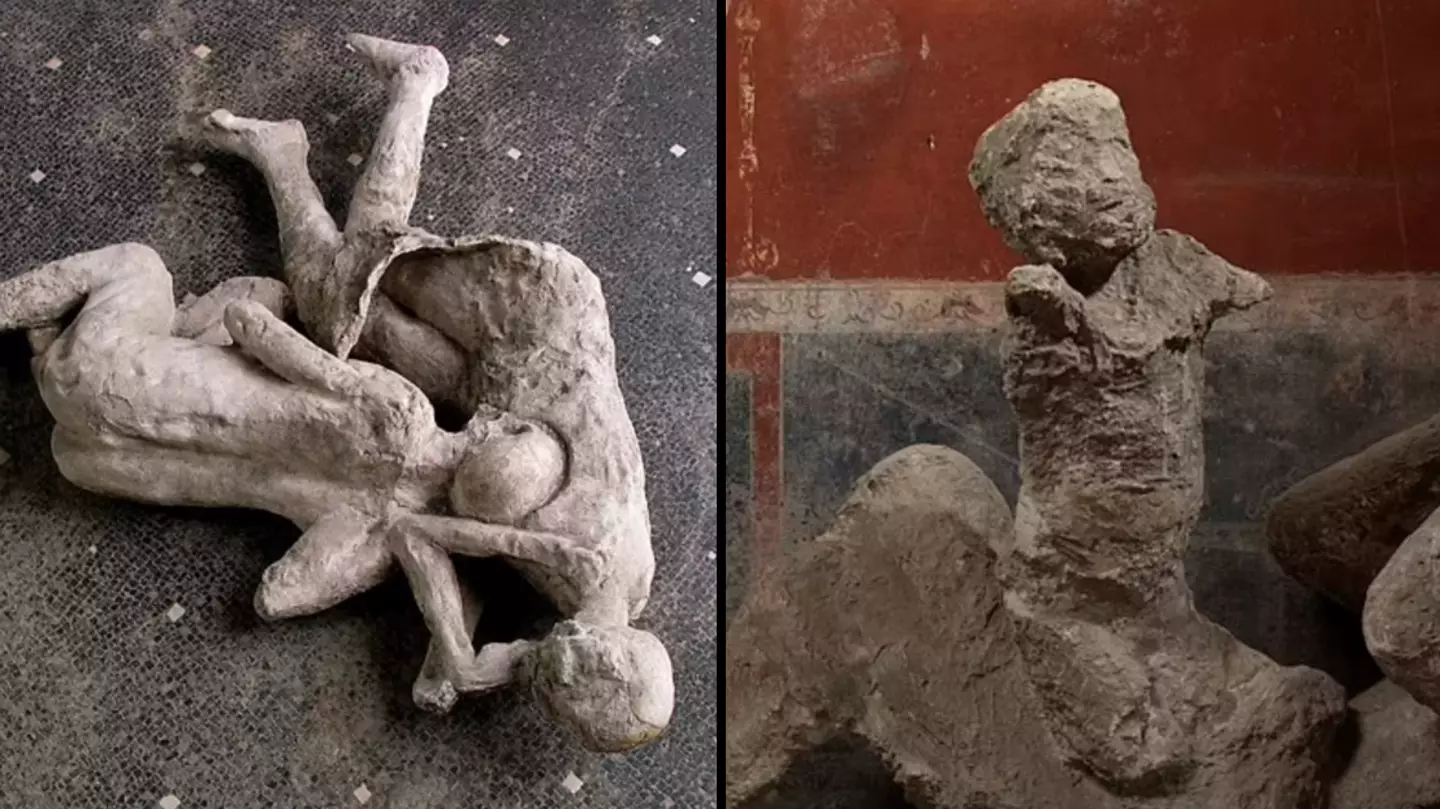
Scientists studying the remains of people who died in the devastating Mount Vesuvius eruption that buried the ancient city of Pompeii have made major DNA discoveries more than a 1,000 years after the event took place.
It was back in 79 AD that the Italian volcano erupted 33 kilometres in to the sky, throwing molten rock, hot ash, and super hot clouds of gas across the Bay of Naples.
For those who want to try and quantify it in modern terms, the mount of thermal energy released in the eruption was 100,000 times that of the atomic bombs dropped on Hiroshima and Nagasaki.

Mount Vesuvius And Pompeii Ruins (Getty Stock Images)
The eruption of Mt Vesuvius was one of the deadliest volcano blasts in history, with several Roman towns destroyed and covered. Pompeii and Herculaneum were two settlements wiped off the face of the Earth and buried under pyroclastic surges, with left victims frozen in suspended actions as they instantly died.
To this day the death toll remains unknown, with 20,000 people living in both cities. So far, remains of more than 1,500 people have been found across the two locations.
After the ruins of Pompeii were excavated, with it now a UNESCO World Heritage Site, the desperate remains of people caught up in the eruption were found by archeologists.
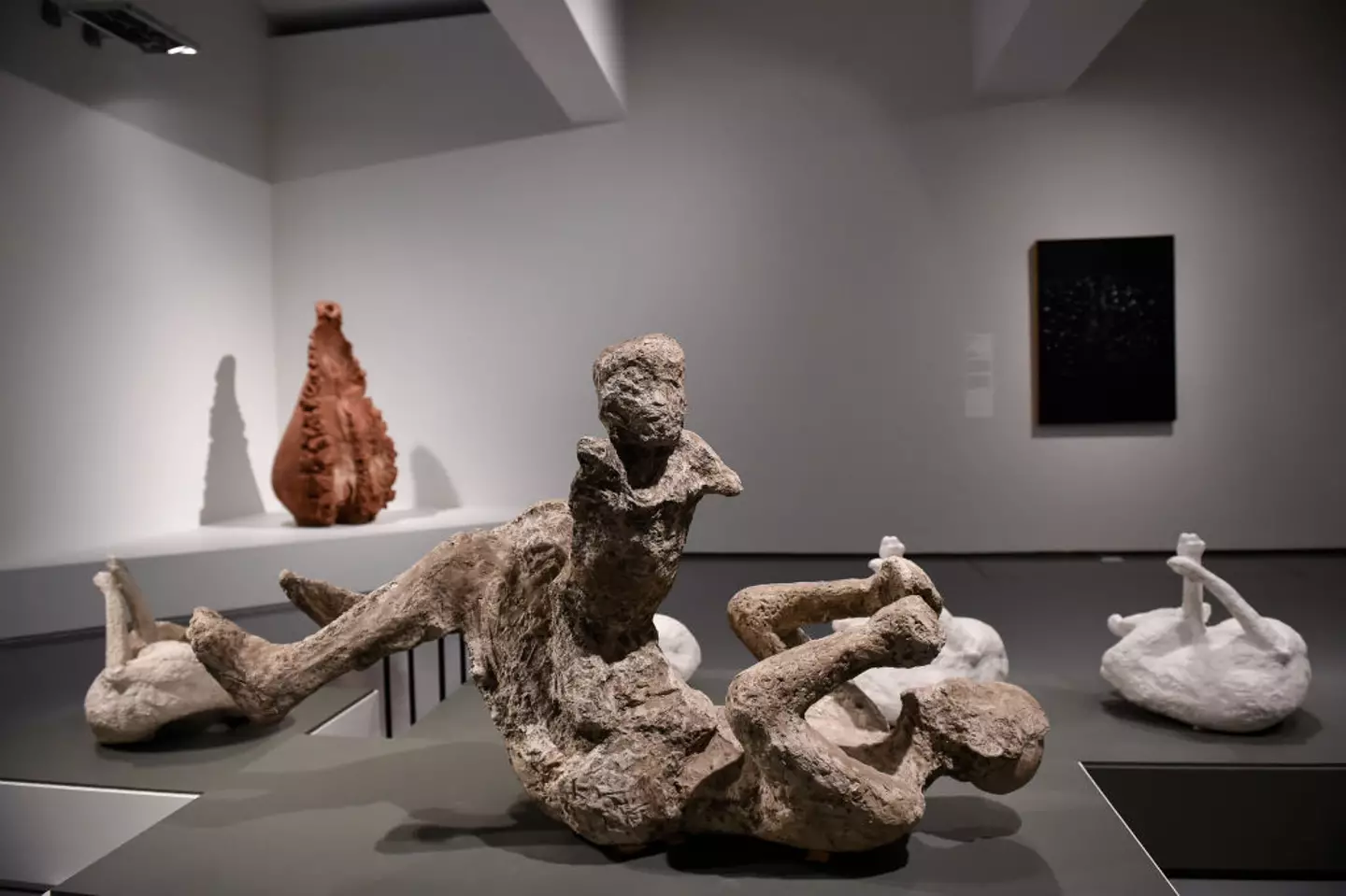
Cast of a man with a child, both of whom died in Pompeii (Marilla Sicilia/Archivio Marilla Sicilia/Mondadori Portfolio via Getty Images)
Observers who look at such remains see the final moments and stories in the plaster casts later made of their bodies, like a mother holding a child and two women embracing as they die.
But new DNA evidence suggests things were not as they seem, and these prevailing interpretations come from looking at the ancient world through modern eyes.
“We were able to disprove or challenge some of the previous narratives built upon how these individuals were kind of found in relation to each other,” said Alissa Mittnik of the Max Planck Institute for Evolutionary Anthropology in Germany.
“It opens up different interpretations for who these people might have been.”
Ms Mittnik and her colleagues carried out tests on 14 casts of victims found in Pompeii’s ruins, where they found that they had been wrongly identified.
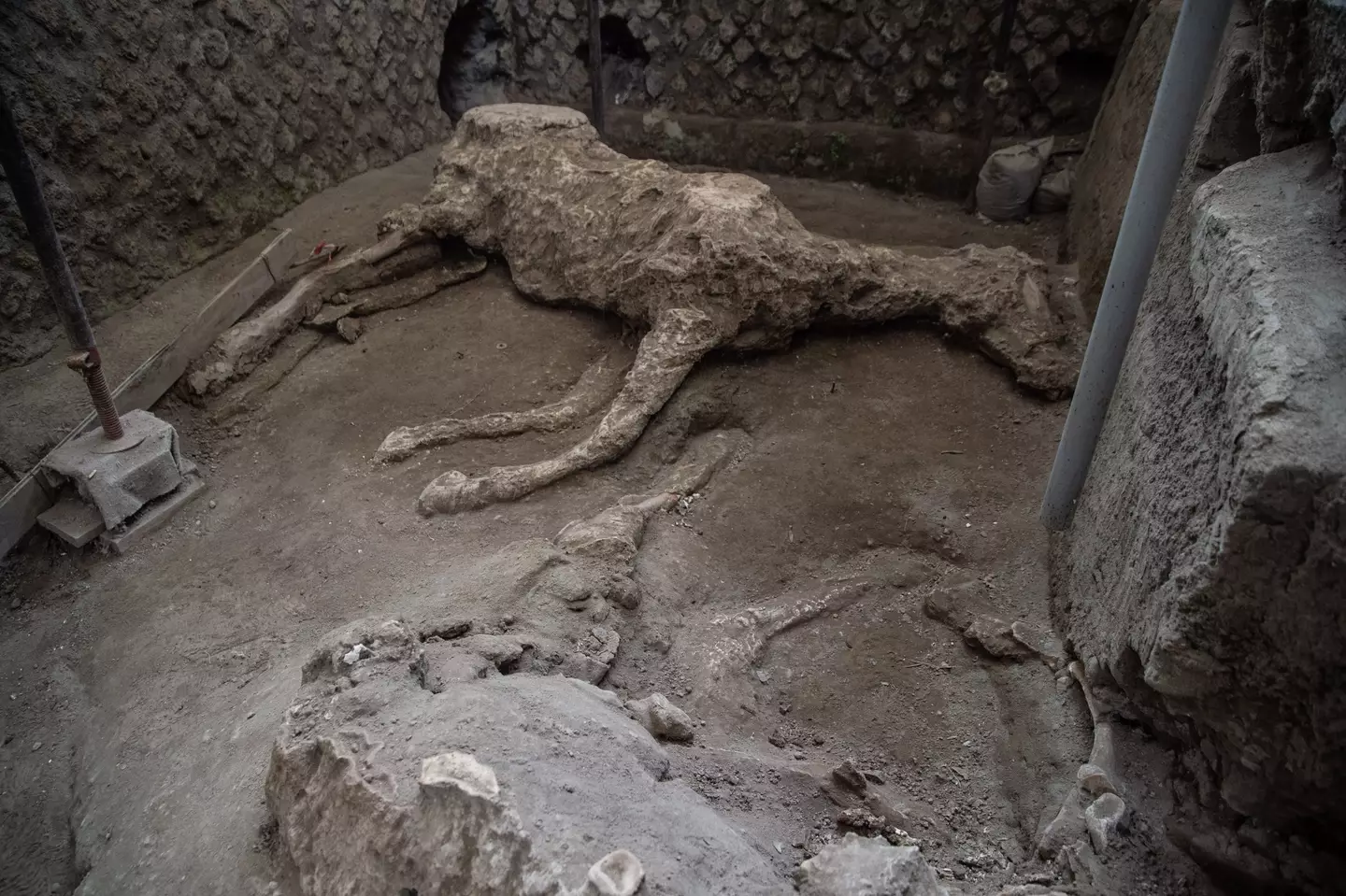
It wasn’t just people who perished in the eruption (Ivan Romano/Getty Images)
Instead of being family, one cast of a man holding a child found that the youngster was unrelated to the person assumed to be their parent. This discovery was found in a location known as ‘the house of the golden bracelet’; named after an intricate piece of jewellery, for which the house was named, reinforcing the impression that the victim was a woman.
And at least one of the two people locked in an embrace, long assumed to be sisters or a mother and daughter, was a man. Their research was published on Thursday in the journal Current Biology.
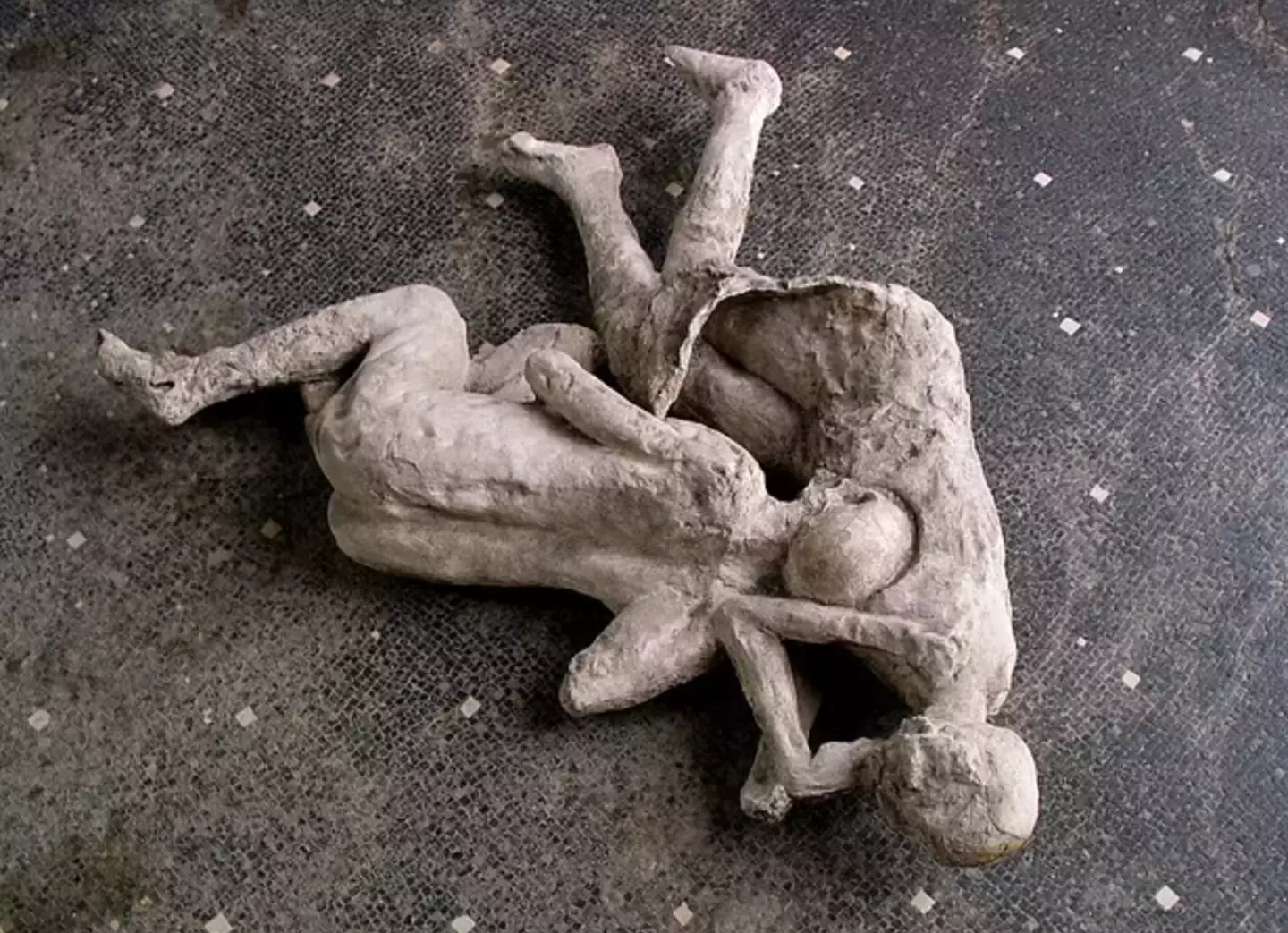
Long thought to be a sister with their mother or daughter, the other person was in fact a man (Archaeological Park of Pompeii)
The study builds upon research from 2022 when scientists sequenced the genome of a Pompeii victim for the first time and confirmed the possibility of retrieving ancient DNA from the human remains that still exist.
“They have a better overview of what’s happening in Pompeii because they analysed different samples,” said Gabriele Scorrano of the University of Rome Tor Vergata, a co-author of that research who was not involved in the current study.
“We actually had one genome, one sample, one shot.”
Featured Image Credit: Archaeological Park of Pompeii
Topics: World News, Education, Science, Environment, History
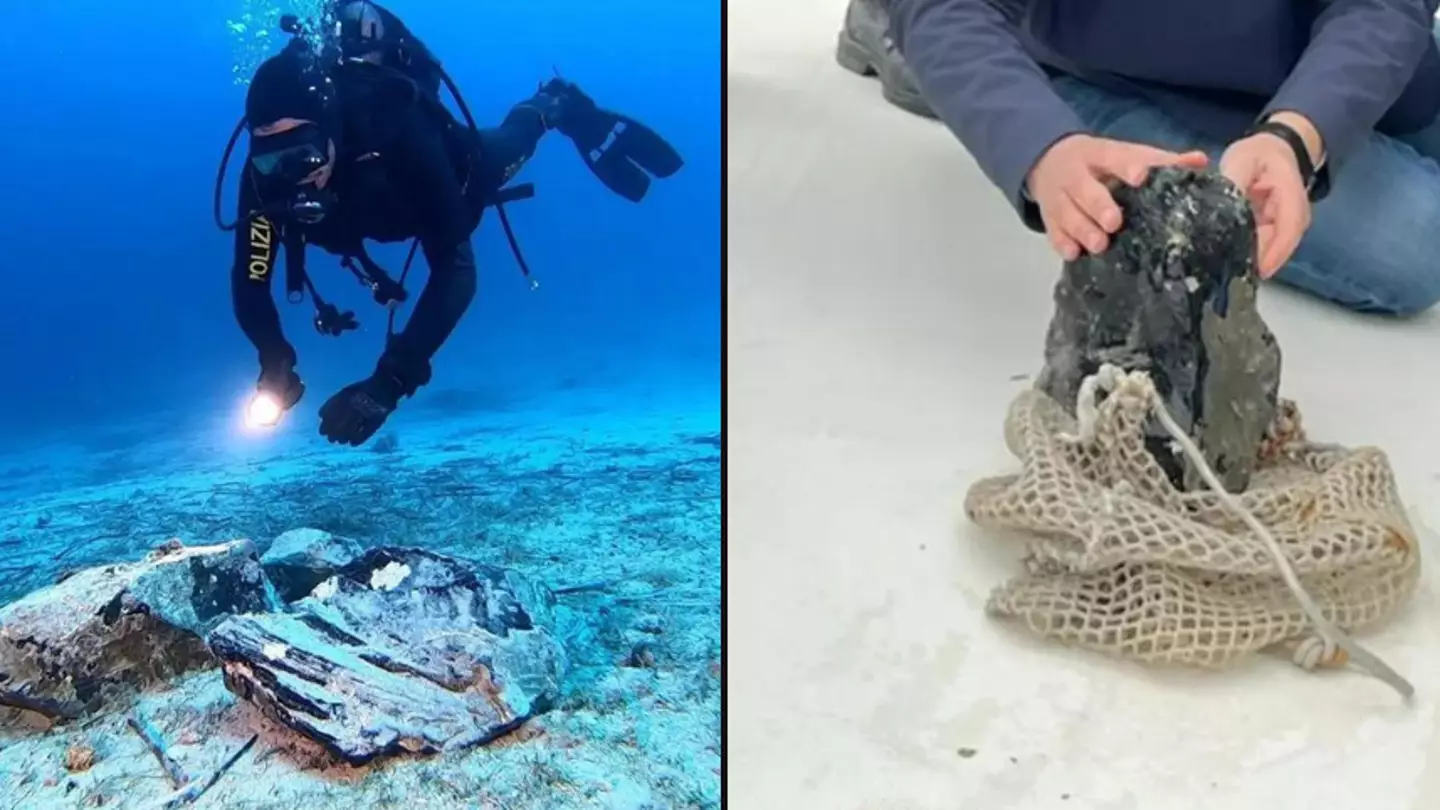
A series of mysterious artefacts have been found off the coast of Naples, and while it could lead to further ‘mind-blowing’ discoveries, it’s also left scientists scratching their heads.
The exciting discovery was made near the island of Capri in the Bay of Naples, southern Italy, back in October.
The objects – made from volcanic glass – have been found near the White Grotto, a cavern not too far from the more famous Blue Grotto, popular with tourists thanks to its blue waters.
The White Grotto is now having its place in the sun too as the discovery prompted speculations about the possibility of finding remains of a Neolithic shipwreck, dating between 8,000 to 5,000 years ago.
The Naples Police Department and marine archeologists joined forces to recover the objects made of obsidian, a shiny, black volcanic glass formed when lava extruded from a volcano cools rapidly with minimal crystal growth.
The most significant item found on the seabed has a weight of eight kilograms (17.6 pounds) and measures around 28 x 20 x 15 centimetres (11 x 8 x 6 inches).
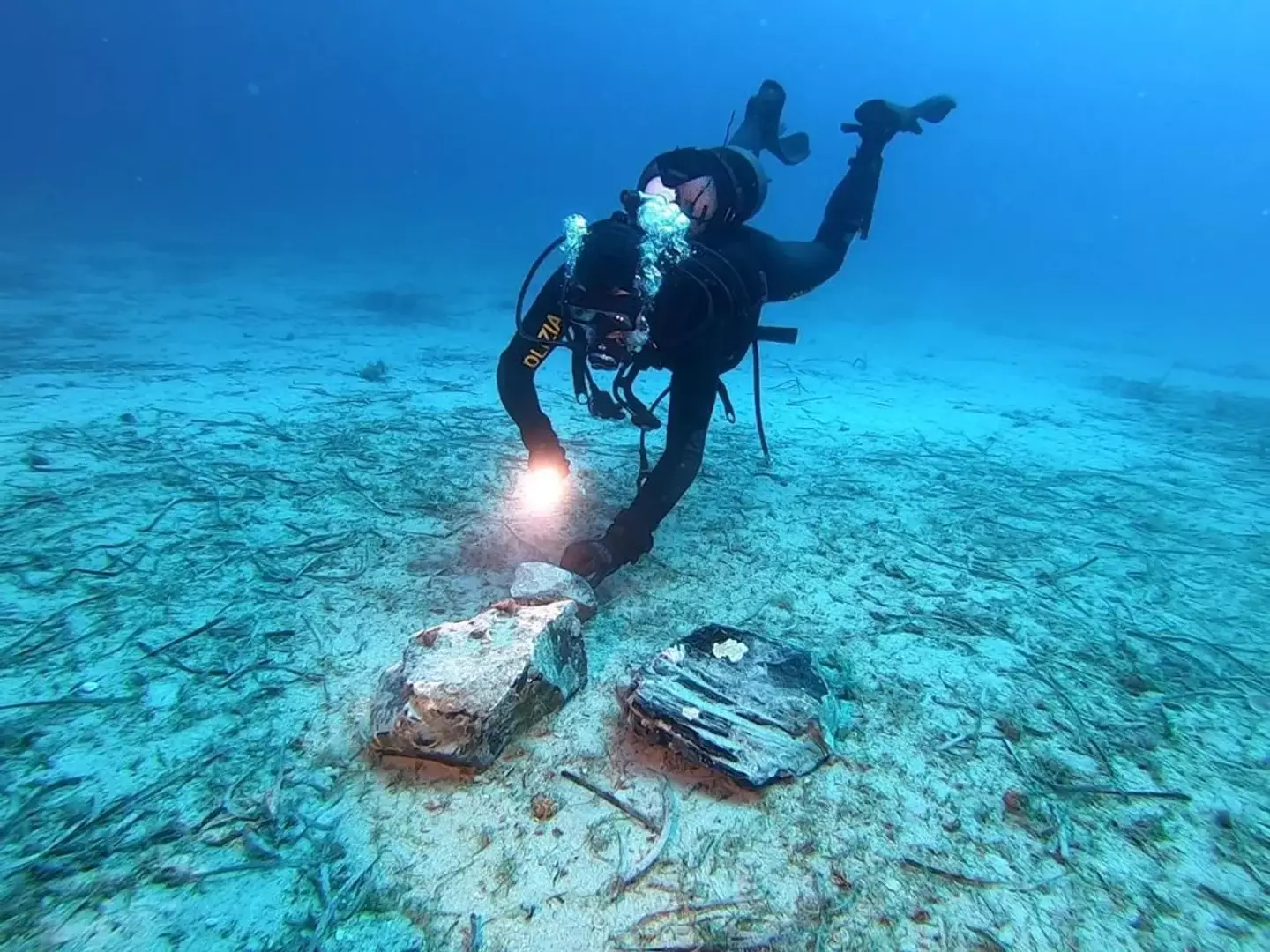
Superintendency of the Metropolitan Area of Naples
Found at a depth of 30 to 40 meters (98 to 132 feet) below the surface, the object is puzzling researchers as no one seems to know what it was used for exactly. Interestingly, the artefact bears marks and carvings on its surface that confirm it was modified by human hands in some way.
“It is necessary to carry out an extensive instrumental survey of the seabed to verify the possible presence of the hull or other cargo material,” Mariano Nuzzo, the superintendent of archaeology, fine arts, and landscape for the Naples metropolitan area, said in a statement released in November.
If marine archaeologists were to find a Stone Age shipwreck, this would be the first discovery of its kind, as Sandro Barucci, a researcher and author of books on ancient seafaring, told Newsweek.
“The remains of a Neolithic hull in Mediterranean waters have never been found to date. There are cases of Neolithic boats found on the European mainland or in freshwater, lakes, and rivers. But the Mediterranean Sea has a pleasant temperature and salinity for the wood-eating mollusk, Teredo navalis.
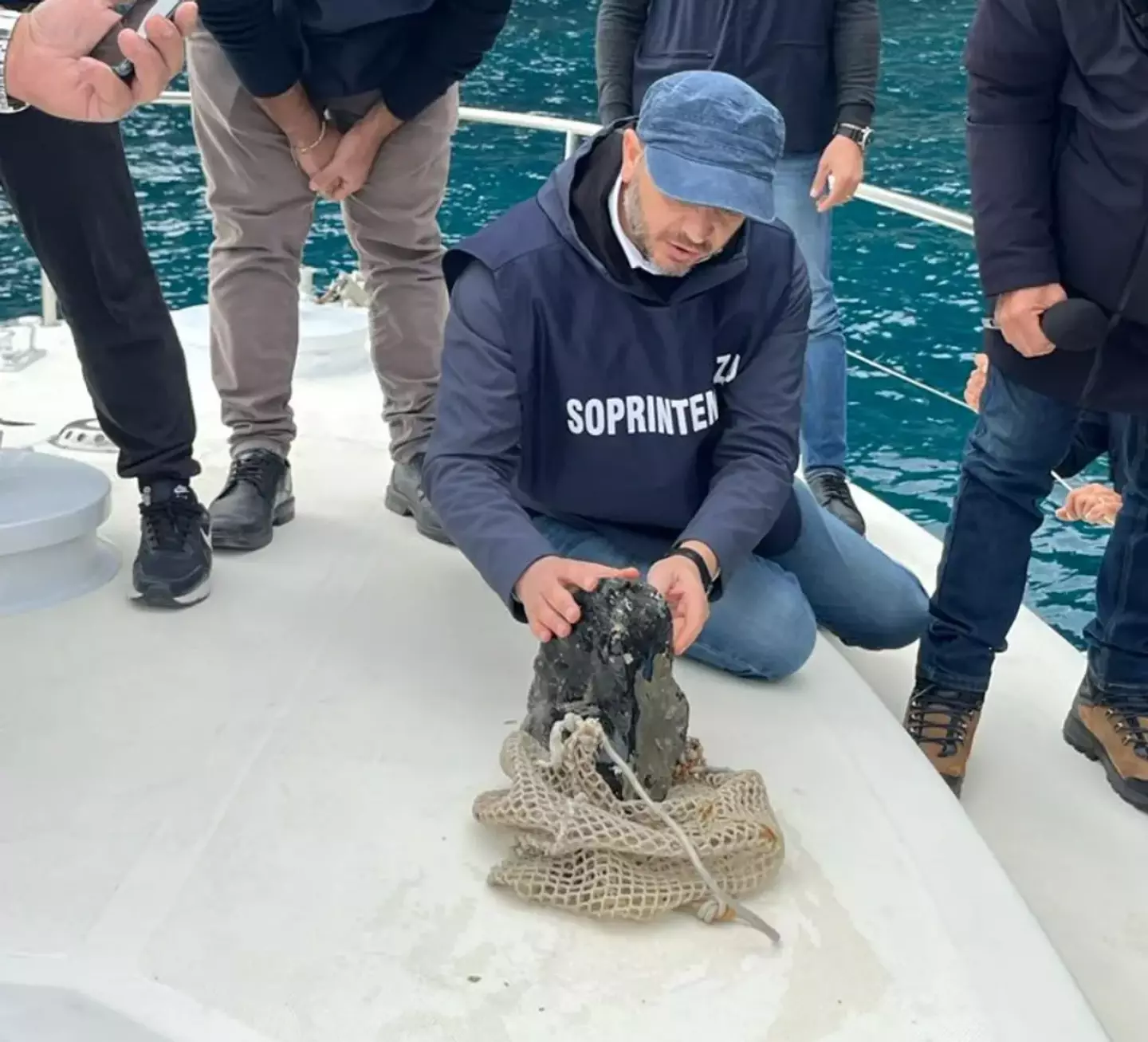
Superintendency of the Metropolitan Area of Naples
“Thus, wooden ships of all ages, when they sink in the Mediterranean, are prey for these mollusks,” he explained.
“At Capri, if the boat had sunk quickly into the sand and remained protected, it would perhaps be possible to find some wooden parts, especially if it were a dugout canoe – i.e. made from a single large hollowed-out tree trunk. But it would truly be a very rare event, indeed unique,” he added.
While it isn’t clear at present if the hull will ever be found, Nuzzo hinted at how further explorations of the seabed could clarify how the obsidian objects were deposited to the seafloor, while also investigating the role of prehistoric Capri.


